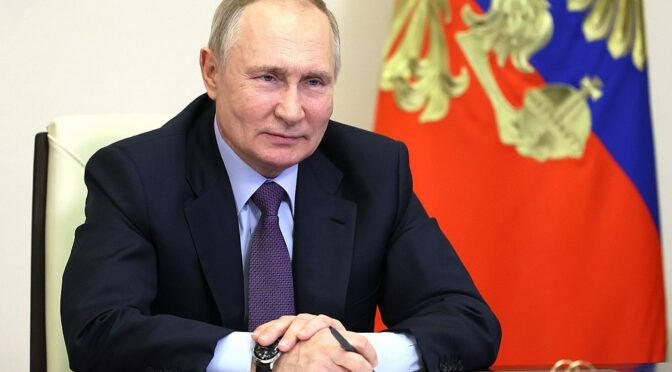Article published in The Daily Telegraph, 30 December 2022. © Richard Kemp
Russia reportedly seeks to launch a major offensive in Ukraine in the coming months. Putin’s legacy, his power and even his life may depend on a decisive victory to justify the immense damage he has inflicted on his own country, not to mention on Ukraine, since the war began. He has caused an estimated 100,000 Russian military casualties so far: a devastating figure that grows by the day.
Given Russia’s size – and its history of fighting mass manpower conflicts, treating its troops as expendable – some seem to think that they can keep this up almost indefinitely. In reality, though, these battle casualties could be Putin’s Achilles’ heel.
His initial plan was to quickly vanquish Ukraine and cow the West by the act of invasion alone. The small size of his force – just 190,000 men – was clearly not intended for a protracted conflict against stiff opposition. As the war unfolded, his generals focused on killing as many Ukrainians as possible, mainly with massed artillery barrages and ballistic missiles, while being ready to give up territory to preserve their thinly-spread army; in effect, buying time to mobilise the number of troops they know they need to eventually overwhelm the country.
That mobilisation, however, has been fraught with difficulties, not least hundreds of thousands of Russian men fleeing the country to avoid fighting, accompanied by large anti-Kremlin protests. Estimates suggest around 100,000 of newly mobilised troops have been deployed so far – barely enough to replace the casualties sustained. Leaving aside the lack of training and equipment shortfalls of these new recruits, Moscow at present simply does not have the numbers to decisively overcome resistance from the depleted Ukrainian army.
We shall see how many of the remaining 200,000 that are claimed actually appear on the battlefield. Whatever happens, Moscow is evidently concerned about its ability to build up enough forces, even through compulsory drafts and another likely round of mobilisation. It has been forced to dangle perks for men volunteering or getting called up to fight in Ukraine, including a grace period on loan repayments and a halt on legal proceedings against prospective soldiers, as well as free freezing and storage of sperm to men heading to the front and subsidised IVF treatment for their families.
The Kremlin is also worried about forced mobilisation increasing dissent in its major cities, and so has disproportionately focused recruitment on remote, impoverished parts of the country. Already it relies on ethnic minorities – often with even less allegiance to Moscow – further contributing to morale problems and poor combat effectiveness. Inevitably, casualties among these minorities are disproportionate, contributing to unrest in some regions. Russia is a federation that has fought wars, notably in Chechnya, to try to keep itself together. Putin will be mindful of the threat to Russian stability that is beginning to emerge, capable of undermining the self-image of a new Peter the Great that spurred him on to take back Ukraine.
Russia’s population has also been in a downward spiral for the last 30 years, caused by decades of poverty and stagnation since the fall of the Soviet Union. The birth rate is well below replacement, with the number of fighting age men falling rapidly.
What all this means is that if Russia does launch a large offensive in the new year, it will not be merely another stage in a conflict they can keep up for years, but a last, desperate gamble. Ukraine’s future depends not just on whether it can defend the territory it now holds, but also on its ability to inflict sufficient casualties on Putin’s army, compelling further mobilisation, heightening instability within Russia and forcing Moscow to the table.
Image: Wikimedia Commons

